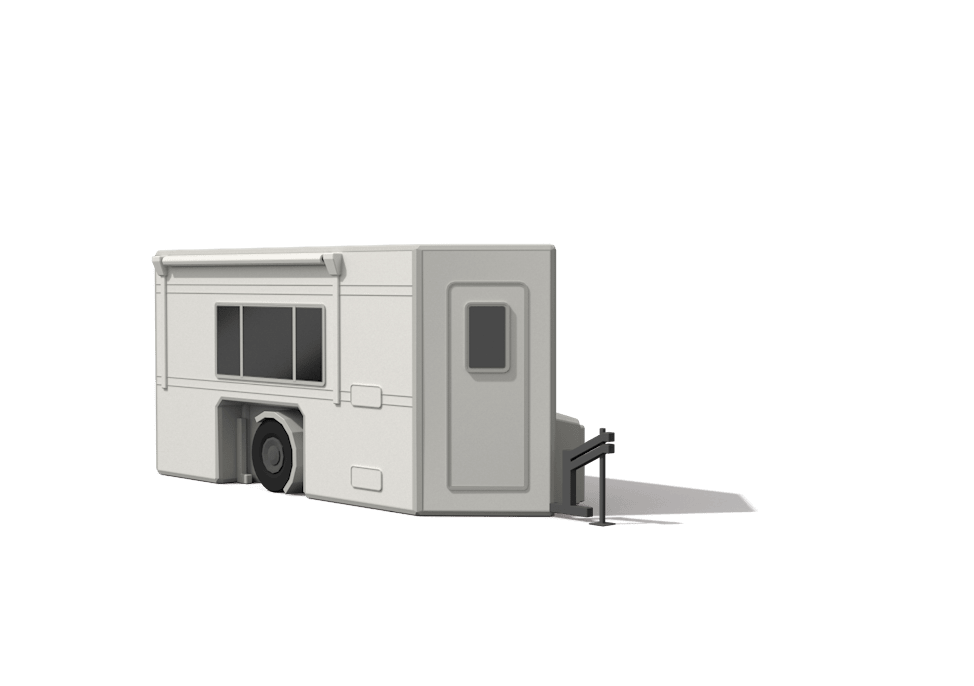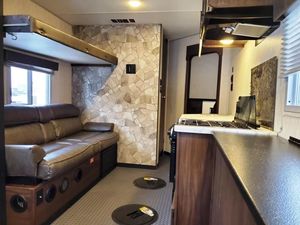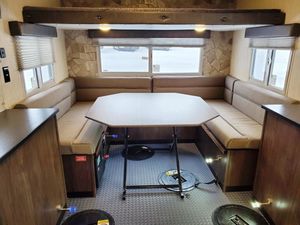The following information was provided to Go RVing courtesy of the Minnesota Department of Natural Resources. For more information on ice fishing safely, visit their website. For the story on this page about the Salzbruns, a park ranger checked the thickness of the ice and it was found to be 24 inches thick.
For more information on ice safety contact the MN DNR and ask for their FREE ice safety publications, which include brochures, a wallet-sized ice thickness reference card and 11X14 posters titled, "Minimum Recommended Ice Thicknesses." The Minnesota Department of Natural Resources can be reached at 651-296-6157 or toll free at 1-888-646-6367. You may also email the Information Center at INFO.DNR@STATE.MN.US.
Did you know?
New ice is usually stronger than old ice. Four inches of clear, newly-formed ice may support one person on foot, while a foot or more of old, partially-thawed ice may not.
Ice seldom freezes uniformly. It may be a foot thick in one location and only an inch or two just a few feet away.
Ice formed over flowing water and currents is often dangerous. This is especially true near streams, bridges and culverts. Also, the ice on outside river bends is usually weaker due to the undermining effects of the faster current.
The insulating effect of snow slows down the freezing process. The extra weight also reduces how much weight the ice sheet can support. Also, ice near shore can be weaker than ice that is farther out.
Booming and cracking ice isn't necessarily dangerous. It only means that the ice is expanding and contracting as the temperature changes.
Schools of fish or flocks of waterfowl can also adversely affect the relative safety of ice. The movement of fish can bring warm water up from the bottom of the lake. In the past, this has opened holes in the ice causing snowmobiles and cars to break through.
When is Ice Safe?
You can't judge the strength of ice just by its appearance, age, thickness, temperature, or whether or not the ice is covered with snow. Strength is based on all these factors -- plus the depth of water under the ice, size of the water body, water chemistry and currents, the distribution of the load on the ice, and local climatic conditions.
Here is a guide for determining ice safety but it's important to keep in mind that ice is NEVER 100% safe.
For new, clear ice only:
- UNDER 4" - STAY OFF
- 4" - Ice fishing or other activities on foot
- 5" - 7" - Snowmobile or ATV
- 8" - 12" - Car or small pickup
- 12" - 15" - Medium truck
Double the above thickness guidelines when traveling on white ice
White ice or "snow ice" is only about half as strong as new clear ice. Double the above thickness guidelines when traveling on white ice. Many factors other than thickness can cause ice to be unsafe.
How to Check Ice Thickness
Before heading out on ice:
Temperature, snow cover, currents, springs and rough fish all affect the relative safety of ice. Ice is seldom the same thickness over a single body of water; it can be two feet thick in one place and one inch thick a few yards away. Check the ice at least every 150 feet.
Ways to check ice thickness:
Ice chisel - An ice chisel is a metal rod with a sharp, flat blade welded onto one end. Drive the chisel into the ice, using a stabbing motion, to create a hole. Next, measure ice thickness with a tape measure.
Ice auger - There are 3 different kinds of augers: hand, electric and gas. Hand augers are low cost, light weight and quiet. Electric augers are also quiet, but use less manual labor than a hand auger. Gas augers drill through ice the fastest, but are heavier, noisier and generally more costly than hand or electric models. After drilling a hole with the ice auger, measure ice thickness with a tape measure.
Cordless drill - Using a cordless drill and a long, five-eighths inch wood auger bit, you can drill through eight inches of ice in less than 30 seconds. Most cordless drills that are at least 7.2 volts will work, but the type of bit is critical. You need a wood auger bit since they have a spiral called a "flute" around the shaft that metal drilling bits don't. The flutes pull the ice chips out of the hole and help keep it from getting stuck, much in the way a full-sized ice auger works. After drilling a hole, measure ice thickness with a measure tape. Dry the bit and give it a quick spray of silicone lubricant after each use to prevent rust.
Tape measure - Use a tape measure to find ice’s true thickness. Put the tape measure into the hole and hook the bottom edge of ice before taking measurement. You can also use an ice fisherman's ice skimmer with inch markings on the handle in place of the tape measure. Don't judge ice thickness by how easily a chisel or drill breaks the surface. It happens so quickly that it’s easy to overestimate the thickness.
For more information on ice safety contact the MN DNR and ask for their FREE ice safety publications, which include the brochures, "Danger, Thin Ice" and "Cold Water Kills" and the wallet-sized reference card and 11X14 posters titled, "Minimum Recommended Ice Thicknesses." The Minnesota Department of Natural Resources can be reached at 651-296-6157 or toll free at 1-888-646-6367. You may also email the Information Center at info.dnr@state.mn.us.































